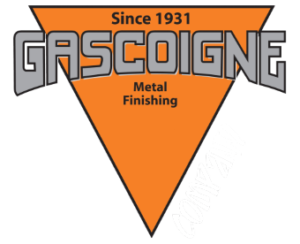Passivating of Stainless Steel
Passivating Stainless Steel – Changing the chemically active surface of stainless steel to a much less reactive state. This is accomplished by soaking the parts in a bath of oxidizing acid (nitric) which removes free iron from the surface and promotes the formation of an invisible and impervious layer of oxide on the surface of the part.
Key Benefit – Passivating will remove free iron from the surface of the parts and allow the formation of a passive invisible oxide surface that gives stainless steel its ability to be corrosion resistant. Passivation should be the last operation done to stainless steel parts.
Free Iron – Free iron can appear on the surface from any number of sources. It can be a by product of casting operations, tumbling, blasting, storage in carbon steel containers, and impingement with carbon steel cutting and forming tooling. Parts placed into service without this operation being performed will give the appearance that they are rusting.
Process Description – Parts are put into large baskets and immersed in a bath of nitric acid and water for a period of time sufficient to remove surface iron. The parts are then removed from the bath and thoroughly rinsed and dried.
Operational Standards – We operate our process to the following standards:
- ASTM A380 – Standard Practice for Cleaning, Descaling, and Passivation of Stainless Steel Parts, Equipment, and, Systems.
- ASTM A967 – Standard Specification for Chemical Passivation Treatments for Stainless Steel Parts.
- Customer specific standards – When ASTM standards are not acceptable.
